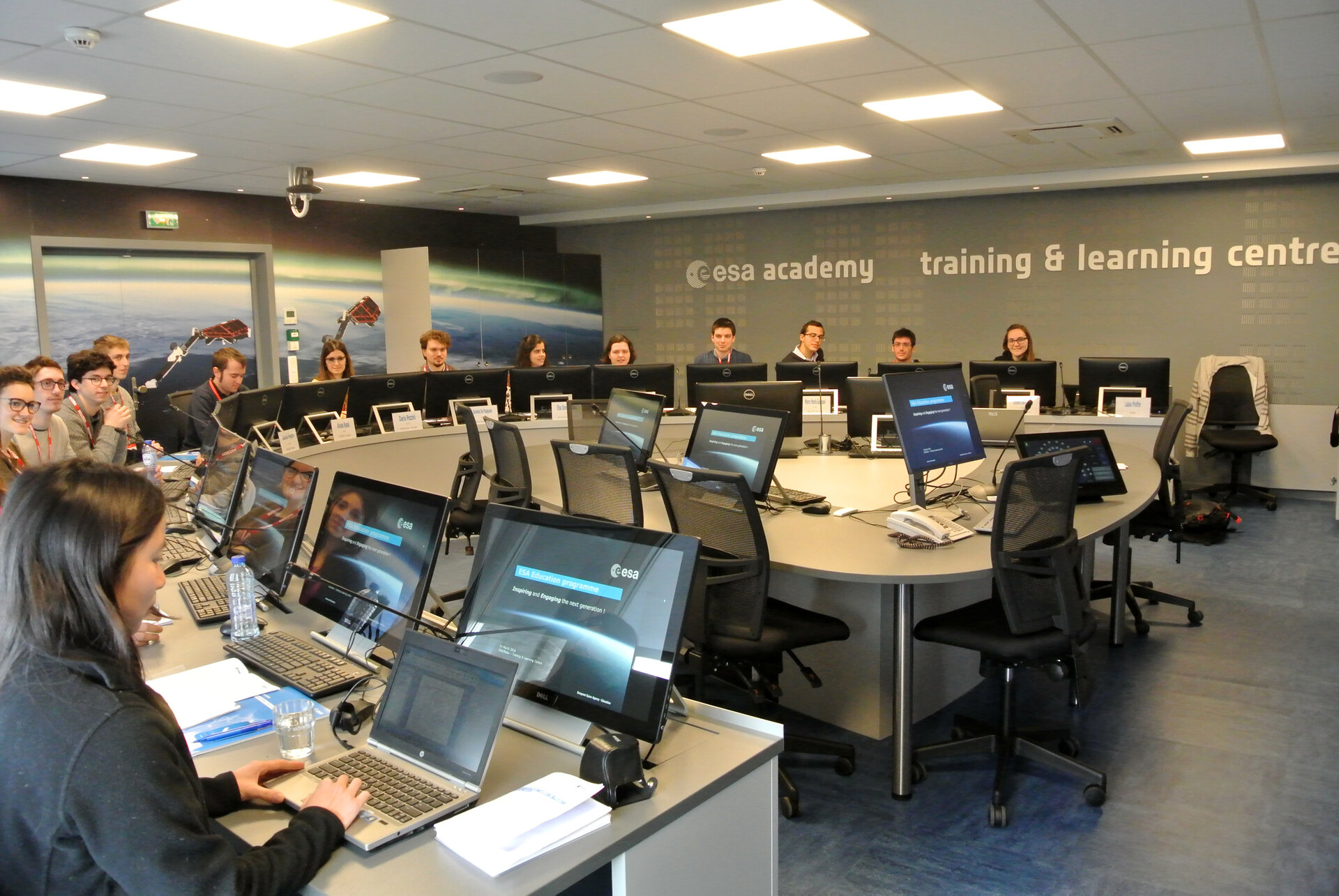Calling the next generation of spacecraft communications engineers
ESA’s Education Office is looking for 22 engineering university students who would like to be introduced to the fascinating world of spacecraft communications. The Ladybird Guide to Spacecraft Communications will run again between 6 and 9 March 2018 at the ESA Academy’s Training and Learning Centre in ESEC, the European space Security and Education Centre, in Redu, Belgium.
It’s easy to take spacecraft communications for granted. Yet the art and science of sending commands to a satellite and receiving data back is of paramount importance. Without highly skilled communications engineers there would be no space missions.
The course that will be held at ESA Academy’s Training and Learning Centre will consist of formal lectures with lots of interaction and will be provided by an ESA expert who works for the Advanced Mission Concepts Section at ESOC, the European Space Operations Centre in Darmstadt, Germany. He will relay real stories of operations engineers battling wayward spacecraft – sometimes winning and sometimes losing. The way communications systems are designed can have a crucial impact on how they are used and what problems can occur!
During the week, the students will take part in a group exercise in which they will be asked to design a communications system for a mission which then experiences an anomaly taken from real life. They will be presented with the information available to an operations team at the time the problem occurs and will have to ask themselves "what went wrong?", and more importantly "what can we do now?”.
At the end of the course, the students will have a solid understanding of the challenges of communicating with a spacecraft and the subsystems involved in communications (both onboard and on the ground): what can go wrong, troubleshooting, and traps to be avoided during operations and testing.
Students will be evaluated on the group exercise, and upon completion of the training course will receive a certificate and course transcript, allowing them to claim ECTS credits from their respective universities.
ESEC
ESEC is part of ESA's tracking station network – ESTRACK – a global system of ground stations that provides links between satellites in orbit and ESOC.,
The core ESTRACK network comprises nine stations in seven countries. At ESEC, the centre piece is the 15m-radio dish, but there is also a 13.5m and a 2.4m dish. In between the lectures, the students will visit the PROBA satellite’s control room and antennas so they can see the back-end equipment, and will have the chance to talk with ESA’s operations engineers.
Preliminary schedule:
| Day 1 |
Introduction The Challenge Modulation Group Exercise |
| Day 2 |
Demodulation Coding Decoding Group Exercise |
| Day 3 |
Protocols Radio Frequency transmissions/reception Link Budgets Group Exercise |
| Day 4 |
Real Ground Stations Summary of the Group Exercise |
Students wishing to apply for the training course must submit their applications by 22 January 2018.
More information:
Who can apply?
Students enrolled in university who fulfil the following criteria:
- be aged between 18 and 32;
- be a citizen of an ESA Member or Associate State;
- be enrolled as a full-time 3rd / 4th year Bachelor, Master, or PhD student in a university for the year 2017-2018;
- be studying an engineering subject.
The selected students will be sponsored by ESA. The sponsorship will cover accommodation and meals as well as up to 200 euros for travelling to Redu, Belgium.
How to apply
- Fill in the application form;
- Upload a motivation letter (PDF, maximum 1 page, no images);
- Upload a CV (PDF, maximum 2 pages);
- Upload a formal recommendation letter (PDF, maximum 1 page, including signature, no images) from a university professor or an academic supervisor from the current university;
- Upload an official copy of academic records (PDF, in English, with the university stamp).
For more information, please contact esa.academy@esa.int




